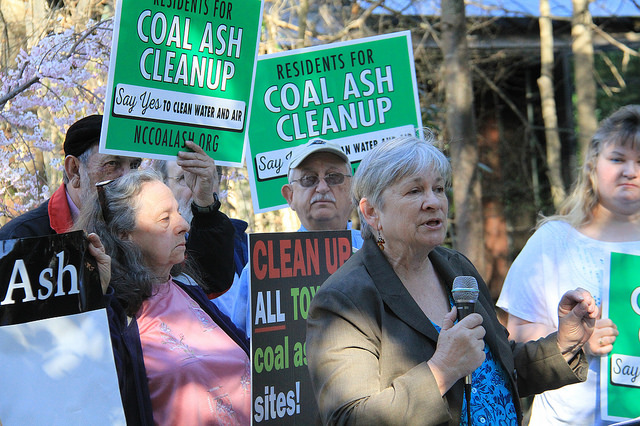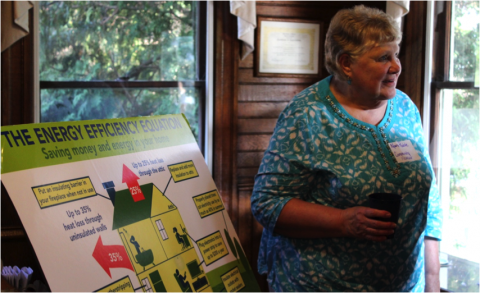Cleaning Up Coal Ash
For well over a century, power plants across the country have burned coal to generate electricity. And for just as long, leftover coal ash has been dumped in open, unlined pits near the power plant, usually located on a river or lake. Every year, U.S. power plants produce 130 million tons of coal ash, which is the second largest waste stream in the country after municipal garbage.
Coal ash concentrates the toxic heavy metals found in coal, including arsenic, mercury, lead and selenium. Stored in unlined, wet impoundments, coal ash has been leaking these toxics into our groundwater and surface waters for years. Sometimes these impoundments collapse — with disastrous results.
Yet government regulations for coal ash management are either non-existent or sparse, and there is little enforcement of the regulations that do exist. In North Carolina, this lack of oversight — and the complicity between state regulators, elected officials and Duke Energy — came to a boiling point in February 2014 when one of Duke’s coal ash impoundments spilled 39 million tons of ash into the Dan River.
Citizens living near North Carolina’s 33 coal ash impoundments — all of which have leaked — have fought for transparency from Duke and the state, and for cleanup of the pollution that threatens their property value, health and family. Their actions forced this issue into the headlines of news networks and to the forefront of environmental justice conversations in the United States.
Appalachian Voices stood with these communities as we worked for years to compel Duke Energy and the N.C. Department of Environmental Quality to excavate coal ash from all the North Carolina sites and dispose of it either in lined, dry landfills, away from waterways, or by recycling it for concrete or other uses, provided it’s done in a manner that protects public health and the environment.
On Jan. 2, 2020, North Carolina announced a historic settlement with one of the state’s most powerful corporations and polluters, Duke Energy. The settlement requires Duke to move nearly 80 million tons of toxic coal ash at six of its power plants to properly lined landfills onsite or recycle it.

Learn information about specific coal ash impoundments in the South, including health threats and safety ratings:
Additional Resources
Fact sheets, videos, links to academic research, and more
Sign Up to Act
Help us protect the health of our communities and waterways.
Latest News
The importance of being earnest — about energy efficiency
Energy use and costs are higher in Appalachia than the national average, so when a high proportion of family income goes towards paying the utility bill, something needs to be done in order to reduce people’s electricity bills through improved home energy efficiency.
Making sense of crisis: The West Virginia floods
In this guest post, West Virginia resident and former coordinator of The Alliance for Appalachia Katey Lauer shares her perspective on the aftermath of the storms and the humanity she witnessed as communities come together and begin to rebuild.
West Virginia files Clean Water Act suit against Kanawha County mine
The West Virginia Department of Environmental Protection has brought a lawsuit against Keystone Industries over Clean Water Act violations at the KD #2 surface mine in southern Kanawha County, W.Va., adjacent to the Kanawha State Forest.
An open letter to the North Carolina General Assembly
In an open letter addressed to North Carolina lawmakers by the Alliance of Carolinians Together (ACT) Against Coal Ash, citizens threatened by coal ash pollution call on decision makers to take urgent action to ensure coal ash is cleaned up and impacted communities have access to clean water.
Speaking up for energy savings
A story on We Own It, a national network to help electric cooperative members rediscover their role as owners of a democratically-controlled enterprise, recounts the efforts of Appalachian Voices’ Energy Savings for the High Country campaign — and how we helped members of Blue Ridge Electric get their co-op’s attention on energy efficiency.
New SWVa project shows top spots for turning old coal mines into economic drivers
Contact: Adam Wells, Economic Diversification Program Coordinator (o)…










